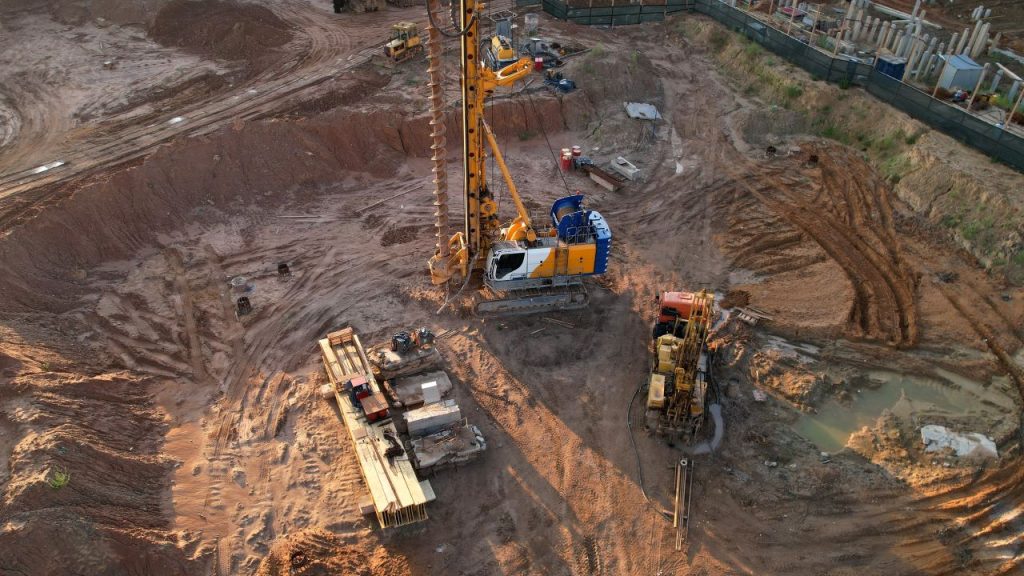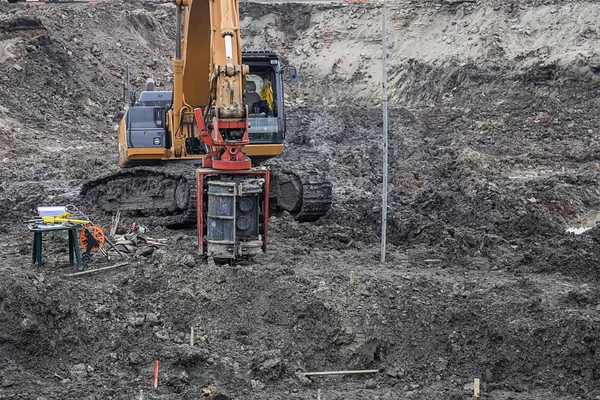Discovering the Benefits of Geo Tech Engineering for Urban Planning
Discovering the Benefits of Geo Tech Engineering for Urban Planning
Blog Article
An In-Depth Take A Look At the Scope of Technique for Geotechnical Designers and Their Influence On Project Feasibility and Threat Mitigation
The range of technique for geotechnical designers includes a range of essential obligations that straight affect task expediency and threat monitoring. What certain techniques do geotechnical designers employ to browse these intricacies properly?
Functions and Responsibilities of Geotechnical Designers
Geotechnical engineers play an essential function in the foundation of building jobs, making certain that frameworks are constructed on strong ground. Geotechnical designers conduct website investigations to gather crucial information pertaining to subsurface conditions.

Cooperation is also a vital element of their duty; they work carefully with civil designers, designers, and environmental professionals to make sure that geotechnical considerations are integrated into general project preparation. Inevitably, the experience of geotechnical engineers is essential in advertising the safety and security, sustainability, and practicality of building ventures.
Secret Locations of Geotechnical Evaluation
Dirt examples and geological surveys are foundational aspects in the essential locations of geotechnical analysis. These activities supply essential information concerning the chemical and physical residential or commercial properties of the subsurface products, enabling engineers to assess site conditions precisely. The analysis commonly encompasses dirt classification, compaction, shear strength, and leaks in the structure, every one of which are important for comprehending the habits of soils under various loading problems.
An additional substantial location of focus is slope stability evaluation, which examines the threat of landslides or soil disintegration. This involves assessing the geometry of inclines, soil kinds, and groundwater conditions. Website characterization is likewise vital, as it entails a detailed examination of the site's history, including previous construction, contamination, and natural threats.
Additionally, groundwater evaluation plays a crucial duty in geotechnical analysis, influencing both the style and building stages. Recognizing the groundwater table, circulation instructions, and possible fluctuations is necessary for efficient structure layout and stormwater administration.
Together, these key locations of geotechnical analysis create an extensive framework that notifies decision-making procedures, ensuring secure and lasting engineering practices while reducing prospective dangers connected with subsurface problems.
Influence on Job Usefulness
The feasibility of a construction task pivots dramatically on the understandings gained from geotechnical investigations. These investigations offer essential data relating to dirt residential properties, groundwater conditions, and subsurface attributes, which are essential for figuring out the suitability of a site for building. By evaluating factors such as soil bearing ability, settlement possibility, and incline stability, geotechnical engineers play a critical role in evaluating whether a job can proceed as prepared or if alterations are necessary.
In addition, the results of geotechnical studies directly affect project design and building methodologies. Exact geotechnical information permits notified decision-making, making certain that geotech engineer structural layouts suit site-specific conditions and adhere to regulatory demands. This procedure aids in maximizing resource appropriation, therefore reducing unexpected hold-ups and cost overruns.
Additionally, a thorough geotechnical evaluation improves the general viability of a project by identifying potential challenges early in the planning phase. By addressing these challenges proactively, stakeholders can improve the task's possibility of success, making certain that it satisfies both financial and practical purposes. In recap, the payments of geotechnical engineers are important to establishing task expediency, thus preparing for reliable job implementation.
Threat Mitigation Approaches
While building and construction projects naturally include various uncertainties, implementing efficient risk mitigation approaches can dramatically minimize potential problems arising from geotechnical aspects. Geotechnical designers play an essential function in recognizing, assessing, and attending to threats related to subsurface problems, making sure that jobs continue efficiently and stay within budget plan.
One main technique includes detailed site examinations, which include soil sampling, in-situ screening, and lab evaluation. These evaluations provide crucial information on soil habits, toughness, and structure, making it possible for engineers to develop structures and earthworks that are both effective and secure. Furthermore, employing sophisticated modeling methods, such as finite component evaluation, enables engineers to forecast just how dirt and architectural interactions may develop under various loading conditions.
Another efficient mitigation approach is the implementation of proper style modifications, such as using reinforcement strategies or adopting alternate building find out and construction approaches, which can boost security and reduce vulnerability to geotechnical issues. Furthermore, continual tracking of site problems during building and construction can promote timely treatments, hence minimizing the probability of unforeseen problems.
Case Studies and Real-World Applications
Situation researches provide important insights into the sensible applications of geotechnical design concepts and highlight the efficiency of danger reduction strategies in real-world scenarios. One remarkable example is the construction of the Centuries Dome in London, where ingenious ground treatment techniques were executed to attend to challenging soil conditions. By using deep cement mixing and soil stabilization techniques, engineers successfully created a steady foundation that mitigated possible negotiation risks, guaranteeing the job's usefulness.
Another instance is the stablizing of the hillside for the brand-new freeway in The golden state, where comprehensive incline evaluation and surveillance were utilized. Geotechnical designers used maintaining walls and drainage systems to manage groundwater, dramatically minimizing the danger of landslides. This positive method not only protected the integrity of the freeway but also improved public safety and security.
Furthermore, the expansion of a significant airport incurable showed the importance of detailed website investigations. geotechnical eng. Geotechnical designers recognized problematic dirt layers and recommended details structure layouts, causing an effective task conclusion with lessened hold-ups. These study underscore the crucial function that geotechnical engineers play in examining dangers and implementing reliable services, thereby discover here enhancing task feasibility and overall success
Verdict

By examining elements such as dirt bearing capability, settlement capacity, and incline stability, geotechnical engineers play a critical duty in assessing whether a project can continue as prepared or if alterations are required.
In recap, the contributions of geotechnical designers are important to establishing job feasibility, therefore laying the groundwork for reliable task implementation.
Geotechnical designers recognized troublesome soil layers and suggested details structure layouts, leading to an effective task completion with lessened hold-ups. geotechnical eng. These situation studies highlight the critical duty that geotechnical designers play in examining threats and applying efficient remedies, thereby enhancing task expediency and general success
With efficient threat reduction approaches and the application of sophisticated modeling strategies, geotechnical designers boost project outcomes and lessen dangers connected to dirt and groundwater problems.
Report this page